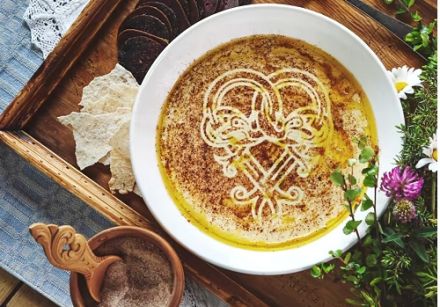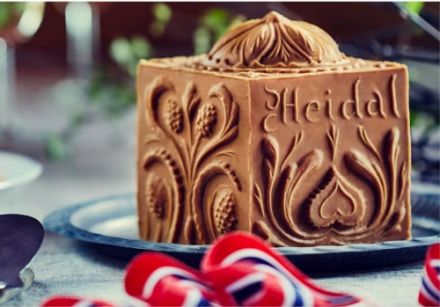 |
A culinary journey in Norway
Norway's 2650 kilometre coastline, with cold, clean water, makes Norway one of the world's biggest exporters of fish. Fish grow more slowly in cold water and their flesh develops a firmer structure with more flavour than fish in warmer waters: Salmon, catfish, monkfish, trout, halibut, turbot and mackerel are examples of wonderful eating experiences, and in summer you absolutely must try fresh Norwegian prawns. Norwegians love to buy their prawns directly from the trawlers coming into harbor with the day's catch and to devour them there and then, sitting on the pier and dangling their legs. Whale meat has always been an important part of the Norwegian diet. Here you have a great chance to try something special.
Cod
In northern Norway cod has been hung to dry in the wind for over 1,000 years, and Norwegians have been exporting dried fish to the rest of Europe for just as long. Dried fish should be beaten with a wooden mallet, soaked in water and taken with mustard or butter, and is counted as a Norwegian speciality.
Krumkake
A krumkake is a thin, crisp cone-shaped cookie - actually more like a thin crêpe. Krumkake literally means "crumble cookie" and their delicate texture makes them especially delicious. This Norwegian specialty is made for festive occasions, particularly Christmas. Krumkake batter is made up largely of sugar, butter, flour, eggs and whipping cream.
Lefse
Lefse is a type of potato flatbread. Lefse batter is prepared using mashed (or riced) potatoes, flour, shortening, and sometimes cream. The dough is formed into small balls and then rolled flat. These pieces of batter are fried on the stove until they start to bubble and turn brown. When the lefse is ready, it is buttered, sprinkled with sugar and/or cinnamon, rolled up and enjoyed. Some people also use lefse like a tortilla, filling it with various kinds of meat, fruits, and/or vegetables.

Lutefisk is made by mixing lye of potash in the water the dried fish is soaked in. This makes the fish particularly soft and full of flavour. Lutefisk is served, among other things, with pease pudding, new potatoes, bacon, mustard and goats cheese.

Rømmegrøt is a kind of porridge made from sour cream. Thick soured cream is boiled on the stove for several minutes, and then flour is added. The mixture is again allowed to boil while it is stirred vigorously so that the butterfat separates and can be removed.
Once the butterfat has been removed and set aside, more flour is added along with scalded milk. Salt and sugar may be added as well, and the porridge is cooked for another five to ten minutes. The rømmegrøt is then ready to be eaten, and is served warm with the butterfat, cinnamon, and sugar.

Skrei is a premium, seasonal Norwegian cod, only to be found in the Northern part of Norwegian waters. Every winter, normally around January, the Skrei swims about 1000 km down to the coast of northern Norway to spawn. It is only available fresh in the winter months, when it is sustainably caught by dedicated local fishermen.

For centuries, the Norwegian brown cheese – or “brunost” as the locals say – has been made with the help from cute goats and cows.
Some say it’s a cultural treasure, with the taste of mountains, fjords and farm traditions.
The taste of brown cheese is difficult to describe, but tourists that visit Norway say that both the colour and the flavour reminds them of dulce de leche. It’s unique – and you either hate it or you love it.
Still, this caramel-looking cheese is eaten daily by many Norwegians, for example on a slice of bread for breakfast or as a snack.
Photos
Lutefisk, Skrei: Seafood from Norway
Brunost, Rømmegrøt: Visit Norway

-

 Recipes
Recipes
-

 Products
Products
-

 Entertaining
Entertaining
-

 Chefs
Chefs
-

 Hints & Tips
Hints & Tips
-

 Glossaries
Glossaries








